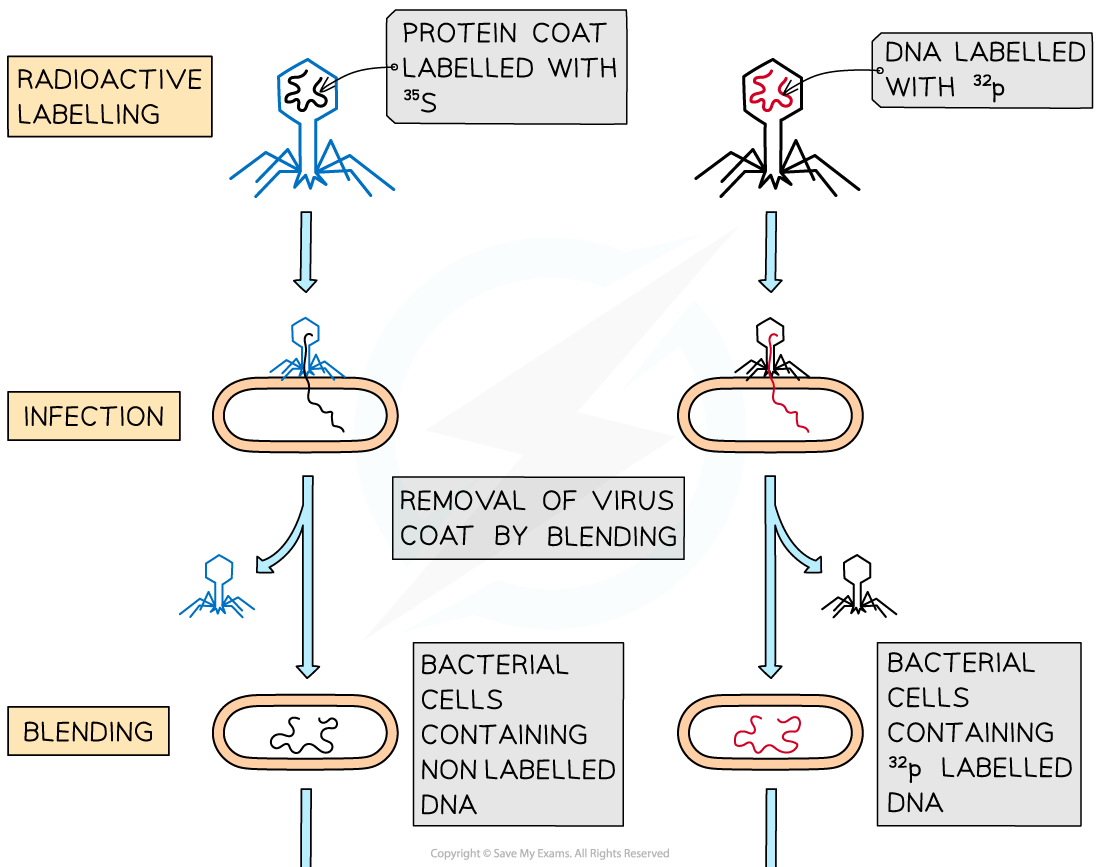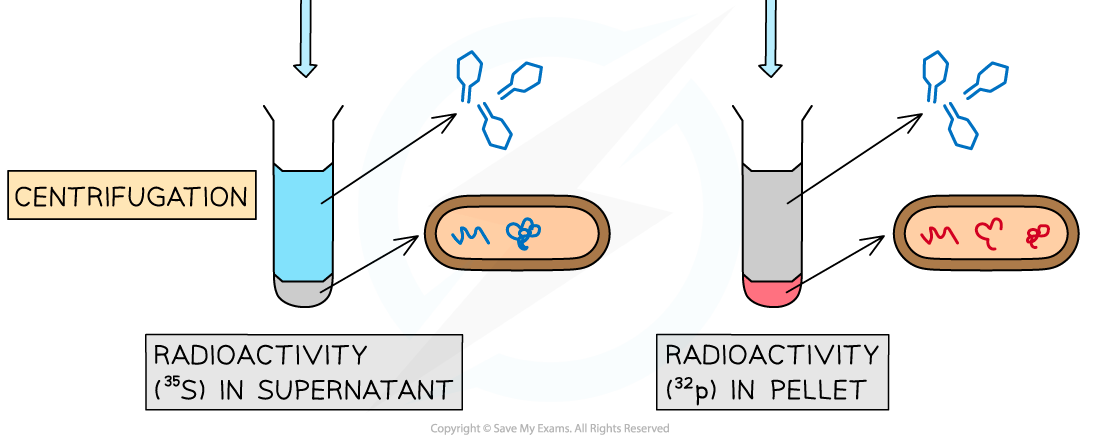- 翰林提供学术活动、国际课程、科研项目一站式留学背景提升服务!
- 400 888 0080
IB DP Biology: HL复习笔记7.1.5 Skills: The Hershey & Chase Experiment
Skills: The Hershey & Chase Experiment
Which Biomolecule is the Heritable Material?
- DNA was identified in 1869 but many scientists assumed that protein was the heritable material
- owing to the fact that there are 20 amino acids and only 4 nucleotide bases
- In the 1950s, Alfred Hershey and Martha Chase showed that DNA, not protein, is a factor of heredity responsible for carrying genetic information from one generation to another
- Viruses that infect bacteria were used in their experiment as they only consist of DNA encapsulated by a protein coat
- This would allow the biomolecule of heredity (ie. the one that caused bacterial cells to be used to produce viral progeny) to be easily determined
Analysis of results of the Hershey and Chase experiment provided evidence that DNA is the genetic material.
- Hershey and Chase took advantage of the chemical differences between DNA and proteins
- DNA contains phosphorus but no sulfur
- Amino acids (that make up proteins) contain sulfur but no phosphorus
- Bacteria grown in separate media containing either radioactive sulfur (35S) or radioactive phosphorus (32P) were infected with viruses
- The progeny viruses contained either 35S labelled proteins or 32P labelled DNA
- Unlabelled bacteria were then infected separately with either type of virus
- Bacteria would be expected to contain the heritable material following infection
- A blender was used to remove attached viruses from the bacterial cells and centrifugation was used to isolate the bacteria
- Viruses are small so remained in the supernatant in the centrifuge tube
- Bacteria are larger so formed a pellet
- Only the bacteria infected by 32P labelled viruses (DNA) were shown to be radioactive
- This suggested that DNA (and not protein) was transferred to bacteria and is the hereditary (genetic) material


Hershey and Chase's experiment provided unequivocal proof that DNA is the heritable material
转载自savemyexam

最新发布
© 2025. All Rights Reserved. 沪ICP备2023009024号-1









